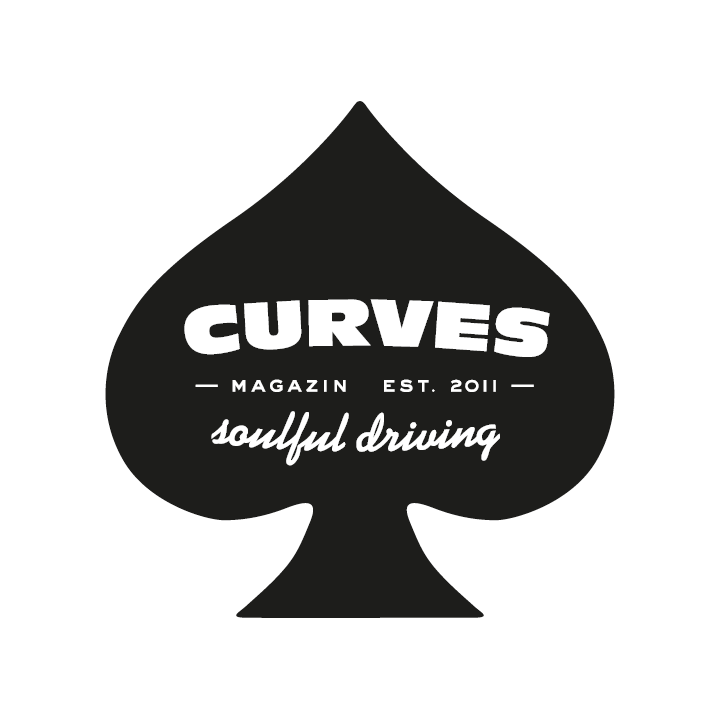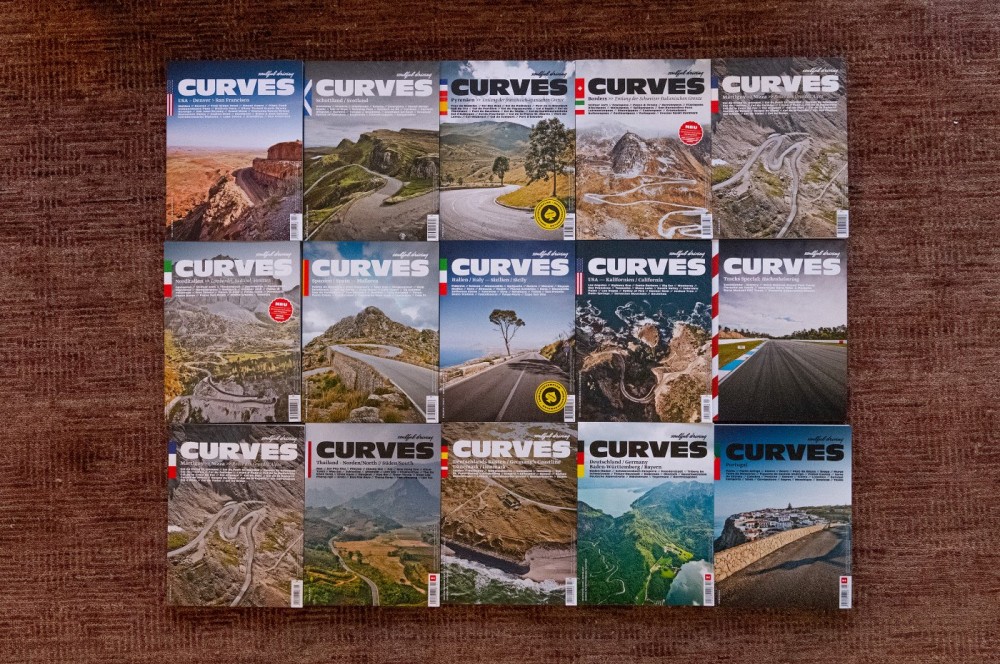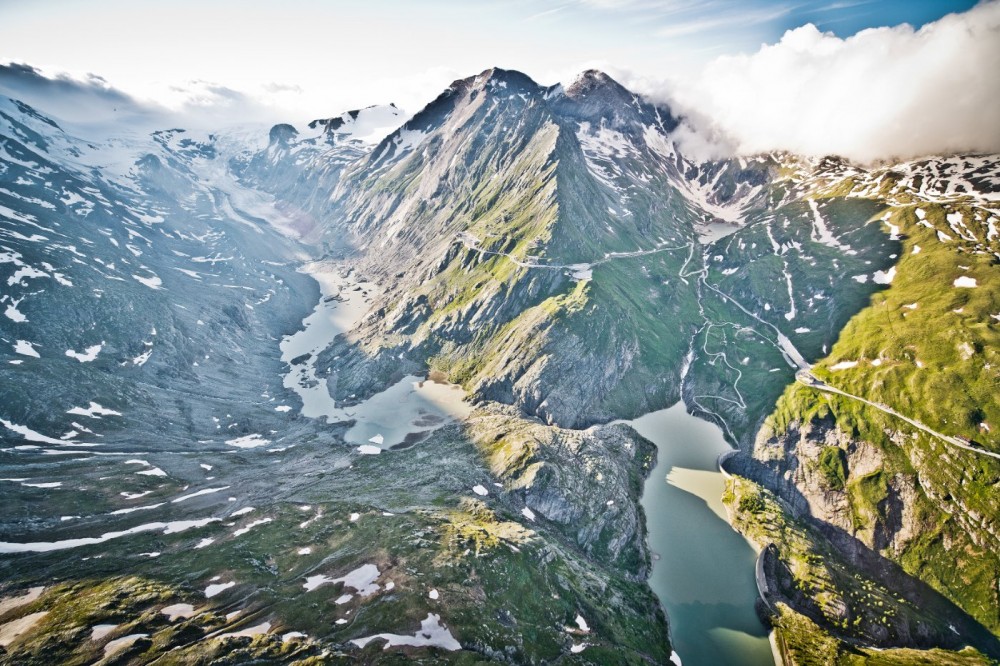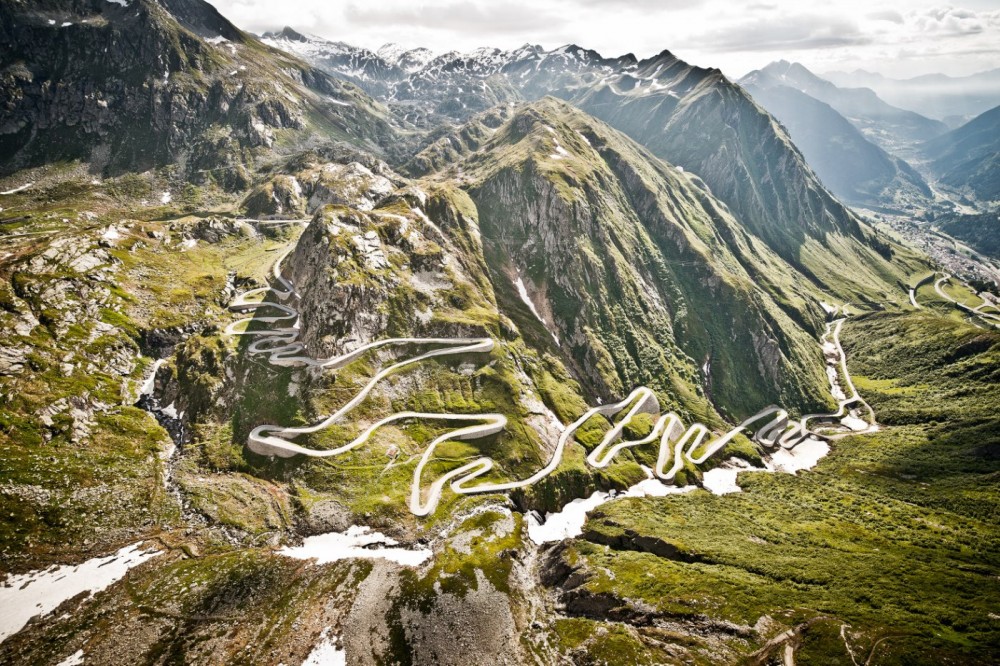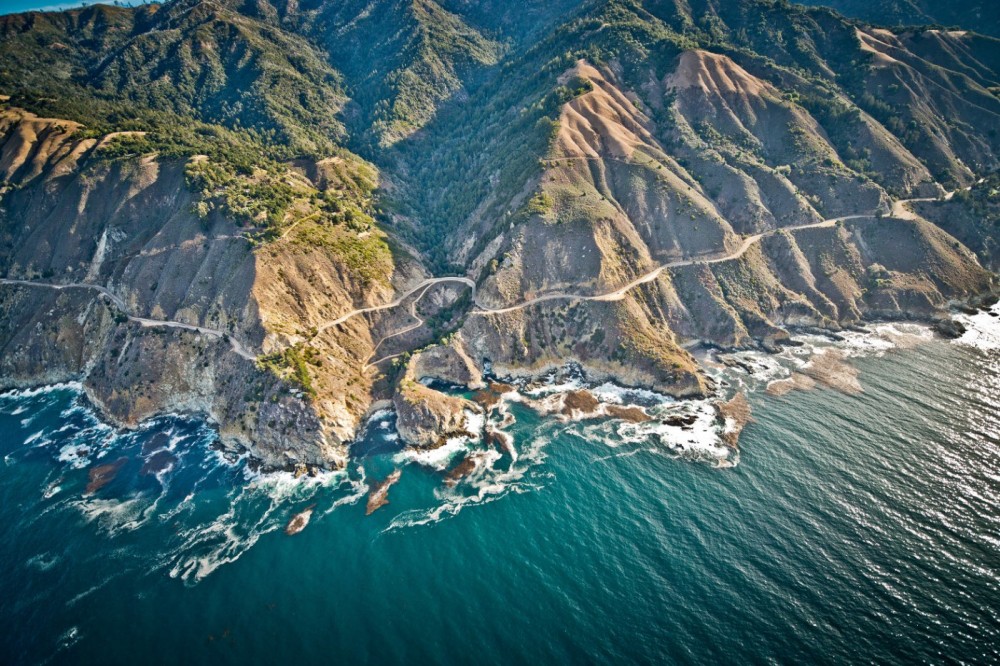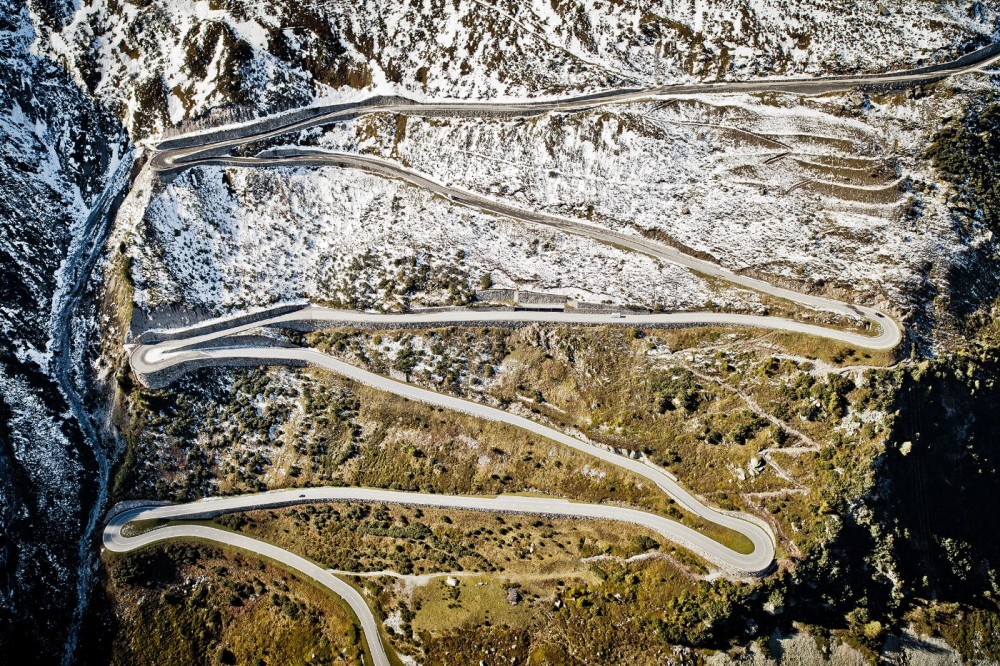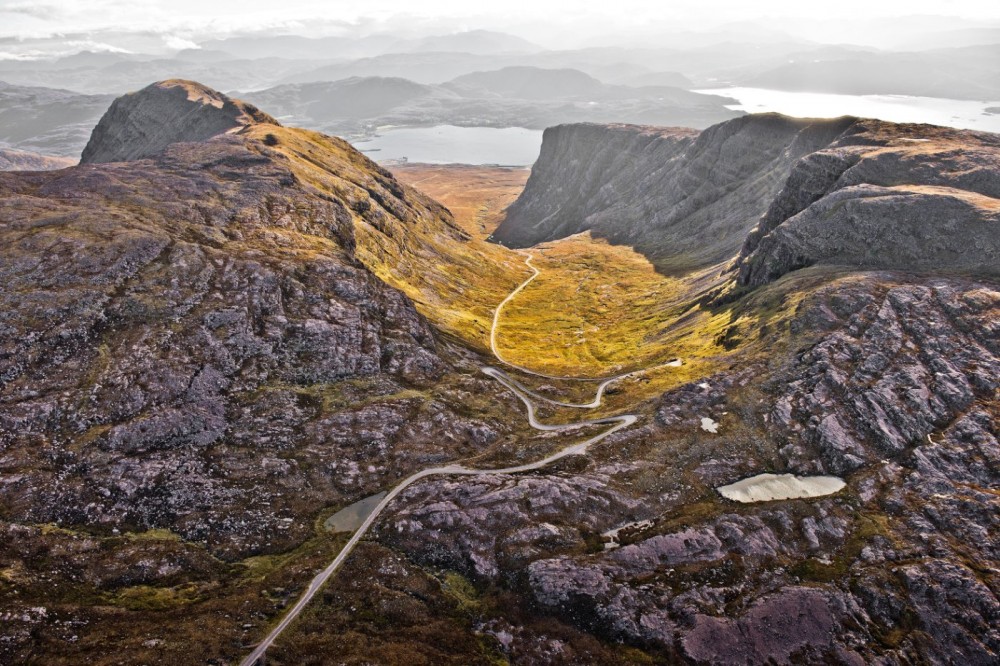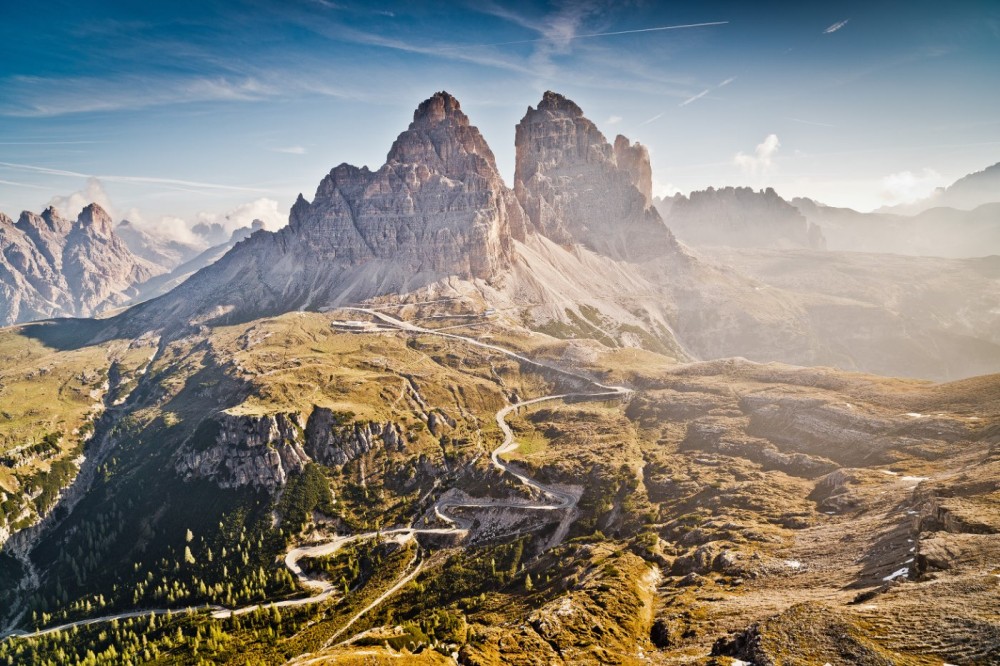Ten years ago, Stefan Bogner's tremendous series of Curves magazines was launched. No less than 16 issues of Curves have been published since then, and just as many books. Co-author Jan Karl Baedeker looks back.
Is a curve always a curve? There are certain types of question you shouldn't put to Stefan Bogner when you’re about to start on a trip. Quite simply because the answer he’ll give you will probably end up being a lot longer than you expected. And if you were to haul him out of his tent in the middle of the night at base camp, 6,000 metres up a mountain, he could probably recite the whole thing off by heart. "Every curve has something special about it. There are long, sweeping curves and short reverse curves, there are tight curves and banked curves, serpentine curves and hairpin bends, and then there are the Caracciola curves, which slope steeply towards the inside of the curve, plus double and triple curves, and the wildest combinations of course. Then there are curves that turn back on themselves and under no circumstances to be underestimated. And curves that lead nowhere. And then we have the quick-change artists among curves - inconsistent compound curves that are as bittersweet as they are hazardous."
It is not only the curves themselves, of course - those mathematically defined road design elements determined by the surveyors when planning routes - that fascinate Stefan Bogner so much. Rather, it is the road as a complete work of art in the context of the landscape that the editor, photographer and product designer has dedicated himself to in his series of "Curves" magazines. The first issue appeared ten years ago. I can still remember that day in 2011 quite vividly – between the pile of press kits that were still being sent to the editorial office along with the mail we received each day back then, a bold-looking, elegantly laid out magazine bearing the title «Curves» slipped out. After flicking through the pages, I was as surprised as I was delighted: there wasn’t a single car to be seen in the entire magazine – instead, there were stunning photographs of deserted Alpine roads, accompanied by delightfully experimental texts originating from somewhere between pop journalism and literature. «And as I flipped excitedly through the pages, making my way from the hairpin bends of the Col du Petit Saint-Bernard in the north to the Col de Turini on the Mediterranean, I could have sworn I could hear the sound of tyres squealing in the Alpine distance and Jane Birkin moaning her "Je t'aime",» and was overjoyed as I wrote my review at Classic Driver.
I met Stefan Bogner for the first time a short time later. We hit it off immediately and he asked me if I would be interested in writing a foreword to his book "Escapes". The topic he had chosen – the most beautiful passes in the Alps. I agreed without hesitation. Since then, we have worked together frequently and have jointly published a whole range of books - including the Alpine pass series entitled "Porsche Drive" and the design book "Porsche Unseen". But even more monumental than the huge stacks of self-published illustrated books as thick as telephone directories that are now piled up like Alpine mountain ranges in his office in Munich, is the solid wall of book shelves that stretches across the entire width of the room, completely filled with all the editions of his magazine "Curves" – the number of volumes published by Delius Klasing Verlag to date already totals 16, among them the great European road trip classics in the Alps, but also the coastal roads of Northern Germany, routes through the Scottish Highlands, jungle tracks in Thailand, Californian highways and country roads in the Portuguese hinterland. This spring sees the release of the Norway edition, with promises of roads through breathtaking fjord landscapes. There’s simply no end in sight.
Stefan Bogner has published his "Curves" magazine regularly for the last 10 years – charting the courses of the world's most beautiful roads with impressive consistency and determination. He focuses not only on the impressive landscapes to be experienced by travelling along the roads, but also on the asphalt ribbons themselves. "Why do we admire a Golden Gate Bridge and list the Rhaetian Railway as a World Heritage Site, but forget the artistically designed roads of the Alps?" asks Bogner again and again. And with his "Curves" booklets, he reveres the skills of the master builders and engineers who have given us masterpieces like the Stelvio, the Susten Pass or the Tremola. "For me,” he says, “these are the pyramids of road building."
And of course, the subtle differences matter here as well: there are beautiful mountain passes that you climb at a gentle pace, such as the Col de la Bonette. And extremely steep climbs like the Stelvio Pass, which you literally have to fight your way up. There are the passes that take you through almost all the climatic zones, like the Timmelsjoch High Alpine Road - you start at the bottom of the pass in summer and arrive at the top in winter. Then there are the "mindblowers" you didn’t see coming. There you are standing at the summit of a nameless pass in the Thai jungle and ask yourself: What was all that about?
For Stefan Bogner, however, the aesthetic and dynamic appeal is not simply the interplay between road and topography. Knowing about the history surrounding the roads is also part of the experience. There are roads out there that have been used for thousands of years. Or military roads that recall the dark chapters of the Alpine wars. And there are mountain roads such as the Susten Pass or the Grossglockner High Alpine Road that seem to have been composed as landscape cinemas designed to provide travellers with a panoramic driving experience. These are roads of art in the truest sense of the word. There are also world-famous roads like the Gotthard Pass - and fantastically beautiful roads nobody knows about. And that you don't tell anyone about, just as you would keep a mushroom spot in the forest all to yourself.
And yet Stefan Bogner is not interested in collecting roads like you would chanterelles or ticking them off on a bucket list. Once he’s been captivated by an asphalt ribbon, he comes back - again and again! "I must have driven over the five passes around Andermatt 100 times at least. And yet I never get bored. The light, the weather, the season is always different. It's like a piece of classical music in which you discover something new every time you listen to it." What is important for both the magazine and the book projects is always the intellectual examination of the construction and the cultural history of a road. “If you should suddenly come across old copperplate engravings or engineering drawings in some archive of an Alpine pass that you’ve driven along countless times, the craftsmanship and achievements of these master builders are revealed in a completely new dimension. "Once you’ve examined the history, then you see these curves and bends in a completely new light - and with a lot of respect. "These are roads are also part of Stefan Bogner’s own history and identity. "My grandparents used to drive across these passes and my children also come here from time to time - even if they do complain a little at the moment from the back seat. For me personally, the mountains, the roads and nature are my source of strength, this is where I recharge my batteries."
On the road with a "Curves" production is definitely a tour de force. The fact that Lagrein wine really tastes good in the evening doesn't mean you don’t have to be in the car park with the engine running at six o'clock sharp in the morning. And if the weather promises you’ll have only an hour of good light that day for shooting a film, then the twelve historic racing cars will be chased over the mountain just a little more briskly than usual – and that's fine by everyone! Stefan Bogner has almost certainly covered more than half a million kilometres in both his classic and modern Porsche 911s doing his thing. Then add to that an estimated two weeks strapped in a harness, camera in hand, hanging out of a helicopter, plus around 48 hours of flying for the aerial shots. When, on occasion, he happens to be at base camp in Munich, you’ll find him editing images, working on the layout of his books, creating new visuals and strategies for his design clients. Two weeks lazing around on a beach doing nothing would probably be a nightmare.
But even so, producing Curves magazines is not an end in itself. Unlike other publications, "Curves" has managed to achieve the seemingly impossible feat of not ageing – but always remaining relevant and offering its readers genuine added value. Particularly in times like these, when many activities have come to a standstill, it’s time to take down an old issue from the shelf and to leaf through it, to roar through the hairpin bends in our thoughts, to feel the wind on our faces – and to make travel plans for the time after lockdown.
It is also quite remarkable that "Curves" has developed its very own, unmistakable image style at a time when Instagram looks and filters that can be changed at will – with glowing colours and a sharpness that only a Zeiss lens is capable of capturing, but also these somewhat melancholic moods, when the faded, brown-yellow pastures of the Alpine valleys are still partly covered in snow and the shrouds of mist repeatedly reduce visibility to a few metres. Other photographers would stop working in these overcast conditions, whereas Stefan Bogner is just getting going. Like the romantics of the 18th and 19th centuries, who became terrifyingly aware of their own insignificance compared with the infinities of the cosmos, when confronted by the dramatic mood and majesty of the mountains, a certain reverence for the wonders of nature - and for the human will that is determined to overcome even the most inhospitable of landscapes - flashes through one's mind when one considers Bogner's panoramic view of curves. This philosophy of respectful admiration appeals just as much to drivers of sports cars as to people who prefer to ride cross their passes on a motorbike or bicycle.
Stefan Bogner is supported by Porsche in the production of his "Curves" magazines and in many other projects. It is also a great pleasure to observe how such a logical liaison has developed into an authentic and creative partnership that never seems to stop reaching new heights. It will be interesting to see in what direction the nicest of all publications dedicated to the admiration of curves will develop - and what role electromobility will take on in the future. There is certainly no shortage of wonderful curves worth discovering and documenting all over the world. Here's to the next ten years.

